|
|
General: VIKING MISSIONS TO MARS (SION=HERMON=MARS=TRANSFIGURATION=TRAVEL THROUGT TIME)
Elegir otro panel de mensajes |
|
|
ISLA SAN GIORGIO (VENECIA)=GEORGE LEMAITRE
Just after midday on July 22, 1946, Zionist terrorists, under the leadership of Menachem Begin, set the fuses on bombs planted in the basement of the King David Hotel in Jerusalem. At 12:37 a huge explosion ripped through the building, killing 91 people. Among the dead were 25 Britons, 41 Arabs, and 17 Jews.
|
|
|
|
|

| Enviado: 03/06/2024 10:05 |
|
DREAMS=D-REAMS=LETTER D

|
|
|

CHAMPAGNE=TROYES (VERDADERA TROYA)
Día de Nuestra Señora de la Magdalena, 22 de julio
|
|
|
|
|
|
Oak Island – the Templar and Viking connection!

Since the mid-nineteenth century, Oak Island has been claimed as the site for a vast, secretly hidden store of Templar treasure. Possibly the location of priceless items they discovered under the Temple of Solomon in Jerusalem.
Vast amounts of money have been spent excavating below ground to find millions of dollars worth of medieval booty. Companies have been set up with the sole task of getting to the treasure left behind by these enigmatic warrior knights. So – is the wealth of the Templars actually there?
Of course the answer is – we don’t know. But let’s try and figure out how the story has come about and why it still exercises such a tremendous hold on the popular imagination.
The Viking link to Oak Island
I think a good starting point are the claims made in the 20th century that the Vikings had got to the New World long before Christopher Columbus. Why is this important? Because if the Vikings could have got there – then why not the Templars?
This theory has been supported by the so-called Vinland map (dating from the 15th century), that seems to show our Viking ancestors touched down in north America. Trouble is, the map is just a little too good to be true and even though scholars from the British Museum and Yale backed it up in the 1960s, the evidence (for example dating of the ink) suggests it could be a forgery.

If it was true, the Vinland map would establish the feasibility of Europeans sailing across the Atlantic to the American coastline. It’s not beyond the realms of possibility because the Vikings did get to Iceland and Greenland. Some Templar conspiracy theorists suggest the knights or those who helped them had access to Viking navigation charts.
TEMPLAR EXCLUSIVE: Do you want to find your Templar ancestors?
The Templars and Oak Island
Moving away from the Vikings now, let’s shift our focus to the Knights Templar. In 1307, their number was up. Philip, king of France, had ordered the arrest of all the knights and they were interrogated under torture in various dungeons. But if the king had hoped to find lots of loot at the Paris Temple, their headquarters, he was to be severely disappointed. Only empty shelves greeted his soldiers.
We then get the story of Templar treasure being spirited away from Paris in wagons bound for the port of La Rochelle and from there on to Scotland (and/or maybe Portugal, see my other blog posts on that option). And then – the wealth of the Templars simply evaporates into thin air!
In his book Lost Treasure of the Knights Templar: Solving the Oak Island Mystery, Steven Sora claims that the Templars’ treasure – gold, silver, jewels and sacred relics of immense power – were firstly hidden away in the crypt at Rosslyn chapel by the Sinclair family. The Sinclairs are central to the whole Templar getaway-via-Scotland theory.
The Sinclair connection
Quick detour on the Sinclair family then. They are an ancient Scottish family that includes Henry, the first earl, who fought alongside the first Grand Master of the Templars, Hugh de Payens (or Payns) in the Holy Land in the early 12th century. So, we have an early association between this family and the order of knights.
Fast forward to the early 14th century and Sir William Sinclair (sometimes spelt St Clair or Saint-Clair) is sometimes held up to have been the last Templar Grand Master before his death in 1330. Trouble is, he also appears to have given evidence at their trials AGAINST the Templars – somewhat scuppering that theory unless he was involved in some kind of complex double bluff!
Then we have another Henry Sinclair who in the late 14th century allegedly explores the coast of north America with an Italian navigator called Antonio Zeno. This establishes the idea that the Sinclair family know all about the New World so are ready for a subsequent very important voyage.
According to Steven Sora, the Sinclairs leave the Templar treasure under Rosslyn until the 16th century. But then along comes the Protestant Reformation. The Sinclairs are devout Catholics. Fearing that that the Templar treasure might be seized, they set sail with it and land on…Oak Island!
Daniel McGinnis on Oak Island
Now, nothing more gets said about this – obviously, being a secret mission – until the 19th century. Then stories circulate in newspapers of discoveries made on the island by a man called Daniel McGinnis in the 1790s. I’ve read different versions of the McGinnis story. In one account, he found a curious depression in the ground while setting up his farm. Or, he saw unusual lights on the island one evening and sailed across, discovering the pit when he got there.
The story of McGinnis and his excavations only emerges fifty years later in a paper called the Liverpool Transcript. By the mid-nineteenth century, tales of pirates and their hidden treasure had become the stuff of boys’ magazines. In 1881, the author Robert Louis Stevenson would publish Treasure Island in a boys’ magazine called Young Folks. The Oak Island booty came to be associated with both the Templars and notorious pirates like Captain Kidd and Blackbeard.
This was also an era of gold rushes – speculators dashing to reputed finds of the precious metal. So, maybe not entirely surprising that Oak Island was soon swarming with diggers. The main attention was the Oak Island Money Pit. This was a curious shaft with what appeared to be booby traps set at different levels.
Most intriguing was the discovery of a stone slab that allegedly has carved on it the message: Forty feet below, two million pounds lay buried. That line is best said if you impersonate Nicholas Cage in the movie National Treasure. More seriously, at least six people have died investigating the very deep money pit due to flooding and in one case, a boiler exploding.
The Franklin Roosevelt connection

One well known Oak Island devotee was the US president Franklin Roosevelt (pictured above). The Democrat occupant of the White House through the 1930s was a Freemason and from his youth until his death in 1945, retained an abiding interest in the site. One feature that apparently gripped him was the rumour that the jewels of the last queen of France, Marie Antoinette, had been squirrelled away on the island.
Which brings us to the 21st century! Such is the level of interest in Oak Island that the History channel has just commissioned a whopping 30 hours for season six of its series The Curse of Oak Island. This runaway success of a documentary series features two Michigan brothers Rick and Marty Lagina who have bought much of Oak Island to pursue the treasure hunt. They are accompanied by local expert, Dan Blankenship.
Rick is a retired US postal worker who passionately believes something lurks under the surface. His brother Marty is the sceptical foil raising doubts every so often about their enterprise. However, as the digs proceed, Marty is seen to convert by degrees to the cause.
The programme has attracted an impressive four million views. And it’s spawned two spin-offs: The Curse of Civil War Gold and Yamashita’s Gold. The first spin-off speaks for itself. The second is the alleged burial of treasure by Japanese soldiers in the closing days of World War II in the Philippine jungle.
In case you missed my recent outing on the History channel – I appeared in episode four of the Templar documentary series Buried earlier this year. Together with presenters Mikey Kay and Garth Baldwin, we looked for Templar treasure in the ancient citadel of Tomar in Portugal.
https://thetemplarknight.com/2018/10/14/oak-island-templars-vikings/ |
|
|
|
|
Who Were the Knights Templar ?
While most people have heard of the Knights Templar and now that they have something to do with the Crusades, few people know much about their history or their Viking connection.
This is a brief history of the Knights Templar that highlights some of the practices that they seem to have borrowed from Viking warrior traditions.
Origins of the Knights Templar

The First Crusade, between 1096 and 1099, was authorized by the Pope to try and take the Holy Land and bring it under Christian (or more specifically papal) control.
Many European Christian knights were recruited to join the fight, and in return for their service, they would be forgiven for all the sins that they confessed.
So, the Crusades also gave the Church a chance to bring knights who had begun to exploit their wealth and position under control.
The Crusaders eventually captured Jerusalem in June 1099. But the almost 10,000 knights (not to mention foot soldiers and non-combatants) wanted to come home.
Only around 300 knights were left behind to defend what was conquered and guarantee Christian pilgrims access to the Holy Land.
For that purpose, some of the devout knights who stayed behind would officially form the Oder of the Poor Knights of the Temple of Jerusalem in 1118/1119, better known as the Knights Templar.
They were officially recognized by King Baldwin II of Jerusalem in 1120 and were assigned tax revenue to them to keep them clothed and fed, though most were wealthy in their own right.
They were also exempt from paying tax or tithes to the church.
Now organized, the Knights Templar became a powerful, wealthy, and influential organization in both the Holy Land and Europe.
They created castles and strongholds in the Holy Land that were used during subsequent crusades.
Their main headquarters were located on the Temple Mount in a wing of the Al-Aqsa Mosque, rumored to be built on top of the Temple of King Solomon.
They were so wealthy that they are sometimes described as the first bankers.
What they actually did was hold the wealth of knights who went off to the Holy Land in their repositories.
They would also lend their wealth to important projects, such as the Church of the Holy Sepulcher in Jerusalem.
Code of the Brotherhood
 Traditional clothing of the Knights Templar Traditional clothing of the Knights Templar
More than just an arrangement of convenience, this was a religious calling for the knights.
They were led by a Grand Master, who was like a dictator and held the position for life.
The first Grand Master of the Knights, Hugh de Payens, established a 72-point code of conduct for members known as Primitive or Latin Rule.
These were specifically designed to increase the piety and zeal of the brothers.
The strict rules dictated what Templars could wear, the types of horses they could ride, the length of their hair and style of their beards, and what meat they could eat.
They wore a white surcoat and red cross representing Christ’s sacrifice and their own willingness to sacrifice themselves.
The rules also forbade contact with women, a rule that was probably largely ignored.
The knights were also required to take their meals in silence and there were scheduled prayers at canonical hours.
They were never allowed to retreat unless they were outnumbered by at least three to one, and they were not allowed to surrender unless their flag had fallen, in which case they were required to regroup.
This commitment to discipline, along with excellent training and heavy armament, made the Templars one of the most feared fighting forces for 200 years.
End of the Knights Templar
 Burning of the Knights Templar Burning of the Knights Templar
While there were several waves of crusades, the Holy Land was eventually lost to Muslim forces at the end of the 13th century.
The knights who were involved, including the Templars, were held responsible, especially after Acre was taken in 1291.
The decision to disband the Templars was probably because the king of France owed them quite a lot of money.
He ordered the mass arrest of French Templars and their property confiscated.
The name of the Templars was dragged through the mud and they were accused of heresy, such as spitting on the cross, illicit sexual acts, and sacrilegious and perverted ceremonies and beliefs, which included kissing one another.
Under torture, the Templars confessed to the charges. While they were absolved of heresy by the Pope in 1308, the order was disbanded, and their wealth was already seized by powerful men.
Some individual Templars would continue to be persecuted.
The last Grand Master, Jacques de Molay, was burned at the stake for heresy.
In Portugal, however, the king refused to prosecute Templars and they were able to thrive there and reform under the name Order of Christ.
This haven is often a gateway to conspiracy theories about the Templars never truly dissolving.
Most famously, Freemasons claim to have an ancient connection with the Templars and use many of the same symbols and ranks.
They once claimed to be directly descended from 14th-century Templars who took refuge in Scotland and helped Robert the Bruce win his battle at Bannockburn against the English for Scottish independence. This is now agreed to be a myth.
What’s the Viking Connection ?
 Image of the Jomsvikings, by Gerhard Munthe, 1899. Image of the Jomsvikings, by Gerhard Munthe, 1899.
The idea of the call of a warrior also being a religious calling would have been familiar in the Viking world.
Even early in the Viking age, berserker warriors were part of a religious order that followed specific rules and engaged in rituals to commune with the spirits of ferocious animals before battle in order to fight better.
But even more relevant were the Jomsvikings, a legendary group of Danish Vikings who probably lived in what is now Poland and formed an elite order in the 10th and 11th centuries.
They also lived by a strict code.
They only accepted men between the ages of 18 and 50, and they had to be sponsored by an existing member.
They were not allowed to leave their stronghold for more than three days without permission and women were never allowed in the stronghold.
The Jomsvikings were not allowed to show fear in the face of the enemy and could never flee from a fight and were only allowed to retreat when severely outnumbered.
They could not speak poorly of one another and were honor-bound to defend their brothers. All spoils were shared equally among the brothers.
It might not be a coincidence that Norwegian Christian Vikings traveled around the Holy Land between 1110 and 1112, and met with King Baldwin I, one of the advocates of the Templars.
They may have brought Vikings and stories, embodied by the Jomsvikings, with them to the Holy Land.
https://blog.vkngjewelry.com/en/who-were-the-knights-templar/ |
|
|
|
|
The Knights Templar – Separating Fact from Fiction

The Knights Templar are those medieval warrior monks, that infamous ‘militia of Christ’ of popular imagination. And yet, they were the subject of speculative fantasy long before the more recent spate of books connecting them to secret knowledge about Jesus, or the Freemasons, or the alleged Lost Treasure of Jerusalem. On this latter, the Knights Templar had supposedly discovered the ‘treasure’ once belonging to the Old Testament King, Solomon, beneath his Temple in Jerusalem. However, not only has no such treasure ever been found, historians are divided on whether Solomon really existed. The same goes for the Temple, too, for “we know nothing about the First Temple, because there are no traces of its physical remains,” says Benjamin Kedar, a history professor at Hebrew University and chairman of the board of directors at the Israeli Antiquities Authority.
But if much of Templar history is fiction, ironically, it is the ‘fiction’ we’re interested in here. We want to know why so much mythic gloss is there, and why the ‘history’ just doesn’t add up. The answer is that the story of the Knights Templar has been suffused with Hermetic symbolism – the language of Alchemy. That’s right – the Hermetic Code has been smuggled into the real story of this band of wealthy, powerful Christian warriors to draw attention to the Adepts of Alchemy. Let’s investigate.
As far as the orthodox version goes, it was in 1118 that a nobleman, Hugues de Payen, visited Baldwin II, the reigning king of Jerusalem. He was accompanied by eight other men and on this day they vouchsafed the king their loyal service to protect Christian pilgrims on their route to the Holy Land. Baldwin thus installed the nine men in a wing of his palace, allegedly erected on the original site of the Temple of Solomon, the putative tenth century BC monarch. The Order of the Poor Knights of Christ and the Temple of Solomon was thus formed. A chronicle from about 1163, written by the prelate William of Tyre (c. 1130 – 1186), tells us that:
‘Although the knights now had been established for nine years [since 1118], there were still only nine of them. From this time onward their numbers began to grow and their possessions began to multiply. Later … it is said that both the knights and their humbler servants, called sergeants, began to affix crosses made of red cloth to their mantles, so as to distinguish themselves from others.’ 1
In a treatise from the early 12th century by the Cistercian abbot Bernard of Clairvaux, we find a glowing account of the Templars: In Praise of the new Knighthood. St. Bernard is apparently writing to Hugues de Payen, and extols the Templars’ virtues of fearlessness, valour, nobility, obedience, piety, and how the world should rejoice at their arrival in the Holy Land. As for where they lived, Bernard says, ‘their quarters indeed are in the very Temple of Jerusalem, which is not as vast as the ancient masterpiece of Solomon, but is no less glorious.’2 And yet – and this will soon become significant – Fulcher de Chartres, King Baldwin’s own biographer (writing much nearer to the time than either William or Bernard) never once mentions Hugues or his nine knights protecting the Holy Land.
Answerable only to the Pope himself, the Templars eventually became a powerful, independent force across the Continent. Stockpiling massive wealth, they essentially created the modern banking system as we know it, aided by donations of money and property from noble families whose sons had been admitted to their ranks. All of this eventually backfired on the Templars when, in 1307, Philippe IV of France had them arrested, and seven years later the last Grand Master of the Temple was burned alive at the stake. They were accused, among other things, of heresy: spitting or trampling on the Cross of Christ.
Significantly, their arrest and imprisonment was accompanied by the seizure of their property, and here is where the story picks up some occult interest. Among the goods confiscated by the Inquisition was a casket described as ‘a great head of gilded silver, most beautiful and constituting the image of a woman. Inside were two head-bones, wrapped in a cloth of white linen, and another red cloth around it. A label was attached, bearing the legend caput LVIIIm [“Head 58m”]. The bones inside were those of a rather small woman.’ Also, the Knights Templar were accused of worshiping (or at least venerating) a bearded male head: a skull, apparently, with three faces. The female skull and bones we’ve mentioned also appear in a medieval legend associated with the Templars:
‘A great lady of Maraclea was loved by a Templar, a Lord of Sidon ; but she died in her youth, and on the night of her burial this wicked lover crept to the grave, dug up her body, and violated it. Then a voice from the void bade him return in nine months time, for he would find a son. He obeyed the injunction, and at the appointed time opened the grave again and found a head on the leg bones of the skeleton (skull and cross-bones). The same voice bade him “guard it well, for it would be the giver of all good things,” and so he carried it away with him. It became his protecting genius, and he was able to defeat his enemies by merely showing them the magic head. In due course it passed into the possession of the Order.’3
For a start, unnatural sexual acts in myth and legend are always deeply symbolic (like the ‘incest’ of the Biblical Lot and his daughters, or Zeus seducing mortals whist in animal form). The underlying idea is that masculine and feminine energies combine to generate something higher, more refined, for such acts refer to the spiritual, not the physical, plane. (The sexual ‘violation’ in the Templar myth above, then, is metaphor.) Plus, the allusions to a head possessed of magical powers come directly from Celtic myth (indirectly, from Alchemy). For example, the head of King Bran could magically speak after being removed from his body. According to Paul Jacobsthal, ‘the Celts [venerated] the human head … above all else, since the head was to the Celt the soul, the centre of … life itself, a symbol of divinity and of the powers of the other-world.’4
The male idol the Knights Templar were accused of worshiping was likewise imbued with miraculous wealth-giving properties – it could even make the land germinate. (This was also a function of the alchemical Philosopher’s Stone.) Not surprisingly, it had three faces (the number of the alchemical stages.) And recall how the Templars’ female skull and bones (symbolising death, or blackness) are wrapped in white and red cloth. These are the three alchemical colours, the three stages of spiritual transformation which must occur: blackening/putrefaction, cleansing or whitening, and illumination/‘reddening’. Plus, you’ll recall the Templars’ attire is of these three colours, from the (black) chain mail, to the (white) smock, to the (red) cross emblazoned onto it.
The Symbolism – Grail, Stone and Knights Templar
The Templars also enjoy a brief reference in the cycle of Arthurian ‘Grail romances’ that began in medieval France. They are really examples of sacred story-telling dressed up as knightly adventures and one in particular – Wolfram von Eschenbach’s Parzival from c. 1200 – is of interest here. The callow, young, knight Parzival seeks out the wise hermit Trevrezent to learn about the Grail and is told: ‘At Monsalvage live a Knightly Brotherhood who are called Templars, and they serve there or in the world as the Grail commands.’ When Parzival asks what sustains them the hermit replies: ‘It is a Stone pure and precious. Through its magic, the wondrous bird, the Phoenix rises from the ashes to new life; also is man renewed by It. If he be ill and look upon It, he is made well. Those who look upon It daily never grow old. This Stone is called the Grail.’5 Thus, the Templars (for Wolfram) are associated with High Magic, presiding over a mystic symbol of spiritual renewal. It’s also why (soon to become obvious) the Knights are said to be originally nine in number.
Those investigating the outward history of the Knights Templar doubt that only nine knights could protect the roads leading to the Holy Land. Further doubt is cast upon the idea that no new members were let into the Order for another nine years. As Fulcher de Chartres failed to mention this early version of Templar History, we can assume such doubts are well founded. The nine is, in fact, symbolic – a common theme in World Myth, representing a magical cycle of completion after which one’s world is irrevocably transformed. Remember the Templar legend above where, after ‘nine months’, the Knight ‘would find a son’ (i.e. complete the Hermetic process).
According to Jolande Jacobi, it ‘has been a “magic number” for centuries’: the beautiful bard of Celtic myth, Taliesin, took nine months to be born from a black hen; there is a sacred spring in Ireland surrounded by nine wise hazel trees, and Nine Sisters oversee the otherworldly, magically invested Island of Apples. From classical legend we get the inspirational Nine Muses and the Ennead – a group of nine Egyptian deities. In Norse myth, the universe is divided into nine worlds all linked by the world tree Yggdrasil (a symbol of wholeness or ‘fate’). Plus the ‘ninth harmonic’ chart in astrology indicates a kind of fulfilment, initiation or completion – depicting the kind of fate one will encounter, no matter how much one tries to change it!
Nine is thus associated with the means towards spiritual perfection or initiatory wisdom; in psychological terms, when the whole psyche is fully integrated and individuated, as Carl Jung would have put it. ‘Guarding the way for pilgrims’ is a figure of speech, then, as is the ‘dangerous route to the Holy Land’ – for this route is an inner one, the spiritual path of all, and not an easy one to take. The ‘nine’ Knights Templar, those Guardians of the Grail in Parzival exist to ‘show the way’ towards one’s true spiritual centre (the ‘Holy Land’).
As for the charge that the Knights blasphemed by ‘trampling’ or denying the cross or even Christ himself, this was a misunderstanding about their own induction into the Christian Mysteries. According to the great Rudolf Steiner: ‘The Cross was held up before the would-be Templar and he was told: You must deny the Cross now, so as to understand it later; first become a Peter, first deny the scriptures, like Peter the Rock who denied the Lord. That was imparted to the aspirant Templar as a preliminary training’6
For Roy Norvill, the author of a modern Hermetic trilogy, this ‘heresy’ contains alchemical roots: ‘In biblical times, the Hebrew name for a Laundryman came from a word that means to trample (to trample with the feet to loosen the dirt, as was the practice). The early Launderer also processed new clothes by bleaching them white … to trample on the cross means to wash or bleach (purify to white) the cross … [symbolic of imperfect, corruptible matter]’7. Thus it was a spiritualising act, and according to Norvill, even the Latin inscription on the Cross (mentioned in the gospels) I.N.R.I (standing for ‘Jesus of Nazareth, King of the Jews’) had an Hermetic interpretation. The four letters stood for Igne Natura Renovatur Integra (‘By Fire [the Spirit], Nature is Renewed Whole’). Now there’s Alchemy for you!
1.The Foundation of the Order of Knights Templar, William of Tyre, Historia rerum in partibus transmarinis gestarum, XII, 7, Patrologia Latina 201, 526-27.
2. In Praise of the New Knighthood (Liber ad milites Templi: De laude novae militae), St. Bernard of Clairvaux (trans. Conrad Greenia).
3. J.S.M Ward, Freemasonry And The Ancient Gods, 1921
4. Paul Jacobsthal, Early Celtic Art, Clarendon Press, 1944.
5. . Mary Blackwell Sterling, The Story of Parzival the Templar (Retold from Wolfram Von Eschenbach), New York, E P Dutton & Company, 1911.
6. From the Lecture: ‘Concerning The Lost Temple And How It Is To Be Restored’, Berlin, 22nd May 1905.
7. Norvill, Hermes Unveiled, Ashgrove Press, 1989.
The above is an edited version of The Knights Templar – Separating Fact from Fiction which appeared in Vol. XXXI (no. 2) of Diamond Fire magazine. Diamond Fire can be found on Facebook.
https://www.astro.nu/2018/07/16/knights-templar-fact-fiction/ |
|
|
|
|
Enigmatic Newport Tower – Built By The Vikings, Knights Templar, Freemasons Or Someone Else?
Ellen Lloyd - AncientPages.com - An intriguing stone structure in Newport, Rhode Island, has been the subject of much controversy and debate.
Standing in the city's heart, there is a 28-foot tower that is just as impressive as mysterious.

No one knows who built the tower or when it was constructed. Several theories have been put forward. Some have suggested the tower was built by the Vikings. Others maintain it’s a legacy of the Knights Templar.
The tower has also been said to be the work of Freemasons. Native Americans, Chinese explorers, and Celts have also been credited with its construction. Despite all guesses and speculations, many still think the tower’s existence is a real scientific enigma.

Newport Tower - Image credit: Wikipedia
According to the mainstream theory, the Newport Tower was built in the mid-17th century as a windmill. In 1948, the Society for American Archaeology investigated the tower, and scientists concluded that all artifacts discovered at the site were from the 17th century.
Newport Tower And Its Astronomical Alignments With Planet Venus
In 20018, forensic geologist Scott Wolter established that the Newport Tower’s construction was completed long before Christopher Columbus reached the New World.
This conclusion was controversial, and many scientists are still upset by Wolter’s theory.

'Leif Erikson Discovers America' by Hans Dahl (1849-1937). Credit: Public Domain
When Wolter investigated the structure, he discovered that Venus alignments are captured in the tower, providing evidence consistent with medieval Cistercian/Templar construction practices that reflect, in part, their religious ideology.
“The capturing of astronomical alignments of the Sun, Moon, and Venus in Western European standing stone sites and churches allowed the builders to use these structures as clocks and calendars, and for determining longitude (using solar and lunar eclipses) and latitude". 1
Did Vikings Or Ancient Chinese Build Newport Tower?
Historian Gavin Menzies argues that in 1421, Chinese sailors built the tower as either a lighthouse or an observatory. According to Menzies, at Newport, the expedition commanded by Admiral Zhou Wen was forced to stop. There, they stayed long enough to regroup their fleet and build a lighthouse. This structure, in his view, resembles a Song Dynasty lighthouse design from the Fijian province in southern China. His theory has not gained many followers and has been rejected by most scientists.
In 1837, Danish archaeologist Carl Christian Rafn published a book named Antiquitates Americanæ in which he proposed a Viking origin for the tower. Rafn partly based on his research of the inscriptions on the Dighton Rock near the mouth of the Taunton River. Rafn became convinced it was a Norse structure built by medieval Vikings who regularly crossed the North Atlantic in open boats.
Does The Newport Tower Have Masonic Roots?
Danish researcher Jorgen Siemonsen suggests the Newport Tower is the work of Freemasons. According to Siemonsen circumstantial evidence points toward the fledgling Freemason movement in Rhode Island and a well-connected, English-trained architect who found work among the rich and famous of Colonial Newport.
That architect, Peter Harrison, laid out an octagon summer house in the mid-1700s for Abraham Redwood, a wealthy Newport merchant, Siemonsen said. That geometric form, closely associated with the Freemasons, is mimicked in the eight pillars of the tower, a little more than a block away, that Siemonsen speculated Harrison also designed.

Newport Tower and Channing Statue. Credit: Adobe Stock - travelview
The tower grounds, according to the Dane, could have been a “Masonic garden’’ where the fraternity conducted its rituals.
As you can see, there are many theories, each offering a very different historical account of the construction of the mysterious Newport Tower.
Many questions remain unanswered, and we still don’t know why the tower was constructed. Was it a windmill, an observatory, or a temple?
First version of this article was published on March 19, 2027
Written by - Ellen Lloyd – AncientPages.com
Copyright © AncientPages.com All rights reserved. This material may not be published, broadcast, rewritten or redistributed in whole or part without the express written permission of AncientPages.com
https://www.ancientpages.com/2024/08/01/controversial-newport-tower-built-vikings-knights-templar-freemasons-someone-else/ |
|
|
|
|
Test of general relativity
[edit]
 High-precision test of general relativity by the Cassini space probe (artist's impression) High-precision test of general relativity by the Cassini space probe (artist's impression)
Gravitational time dilation is a phenomenon predicted by the theory of general relativity whereby time passes more slowly in regions of lower gravitational potential. Scientists used the lander to test this hypothesis, by sending radio signals to the lander on Mars, and instructing the lander to send back signals, in cases which sometimes included the signal passing close to the Sun. Scientists found that the observed Shapiro delays of the signals matched the predictions of general relativity.[31]
|
|
|
|
|

New International VersionIt is as if the dew of Hermon were falling on Mount Zion. For there the LORD bestows his blessing, even life forevermore.
New Living TranslationHarmony is as refreshing as the dew from Mount Hermon that falls on the mountains of Zion. And there the LORD has pronounced his blessing, even life everlasting.
English Standard VersionIt is like the dew of Hermon, which falls on the mountains of Zion! For there the LORD has commanded the blessing, life forevermore.
Berean Standard BibleIt is like the dew of Hermon falling on the mountains of Zion. For there the LORD has bestowed the blessing of life forevermore.
King James BibleAs the dew of Hermon, and as the dew that descended upon the mountains of Zion: for there the LORD commanded the blessing, even life for evermore.
New King James VersionIt is like the dew of Hermon, Descending upon the mountains of Zion; For there the LORD commanded the blessing— Life forevermore.
New American Standard BibleIt is like the dew of Hermon Coming down upon the mountains of Zion; For the LORD commanded the blessing there—life forever.
NASB 1995It is like the dew of Hermon Coming down upon the mountains of Zion; For there the LORD commanded the blessing— life forever.
NASB 1977It is like the dew of Hermon, Coming down upon the mountains of Zion; For there the LORD commanded the blessing—life forever.
Legacy Standard BibleIt is like the dew of Hermon Coming down upon the mountains of Zion; For there, Yahweh commanded the blessing—life forever.
Amplified BibleIt is like the dew of [Mount] Hermon Coming down on the hills of Zion; For there the LORD has commanded the blessing: life forevermore.
Christian Standard BibleIt is like the dew of Hermon falling on the mountains of Zion. For there the LORD has appointed the blessing — life forevermore.
Holman Christian Standard BibleIt is like the dew of Hermon falling on the mountains of Zion. For there the LORD has appointed the blessing— life forevermore.
American Standard VersionLike the dew of Hermon, That cometh down upon the mountains of Zion: For there Jehovah commanded the blessing, Even life for evermore.
Contemporary English VersionIt is like the dew from Mount Hermon, falling on Zion's mountains, where the LORD has promised to bless his people with life forevermore.
English Revised VersionLike the dew of Hermon, that cometh down upon the mountains of Zion: for there the LORD commanded the blessing, even life for evermore.
GOD'S WORD® TranslationIt is like dew on [Mount] Hermon, dew which comes down on Zion's mountains. That is where the LORD promised the blessing of eternal life.
Good News TranslationIt is like the dew on Mount Hermon, falling on the hills of Zion. That is where the LORD has promised his blessing--life that never ends.
International Standard VersionIt is like the dew of Hermon falling on Zion's mountains. For there the LORD commanded his blessing— life everlasting.
Majority Standard BibleIt is like the dew of Hermon falling on the mountains of Zion. For there the LORD has bestowed the blessing of life forevermore.
NET BibleIt is like the dew of Hermon, which flows down upon the hills of Zion. Indeed that is where the LORD has decreed a blessing will be available--eternal life.
New Heart English Biblelike the dew of Hermon, that comes down on the hills of Zion: for there the LORD gives the blessing, even life forevermore.
Webster's Bible TranslationAs the dew of Hermon, and as the dew that descended upon the mountains of Zion: for there the LORD commanded the blessing, even life for ever.
World English Biblelike the dew of Hermon, that comes down on the hills of Zion; for there Yahweh gives the blessing, even life forever more.
Literal Translations
Literal Standard VersionAs dew of Hermon—That comes down on hills of Zion, "" For there YHWH commanded the blessing—Life for all time!
Young's Literal TranslationAs dew of Hermon -- That cometh down on hills of Zion, For there Jehovah commanded the blessing -- Life unto the age!
Smith's Literal TranslationAs the dew of Hermon coming down upon the mountains of Zion: for there Jehovah commanded the blessing, life even forever.
Catholic Translations
Douay-Rheims Bibleas the dew of Hermon, which descendeth upon mount Sion. For there the Lord hath commandeth blessing, and life for evermore.
Catholic Public Domain VersionIt is like the dew of Hermon, which descended from mount Zion. For in that place, the Lord has commanded a blessing, and life, even unto eternity.
New American BibleLike dew of Hermon coming down upon the mountains of Zion. There the LORD has decreed a blessing, life for evermore!
New Revised Standard VersionIt is like the dew of Hermon, which falls on the mountains of Zion. For there the LORD ordained his blessing, life forevermore.
Translations from Aramaic
Lamsa BibleLike the dew of Hermon that falls upon the mount of Zion; for there the LORD commanded the blessing, even life for evermore.
Peshitta Holy Bible TranslatedLike the dew of Hermon that descends upon the mountain of Zion, because there LORD JEHOVAH commanded the blessing and the Life unto eternity.
OT Translations
JPS Tanakh 1917Like the dew of Hermon, That cometh down upon the mountains of Zion; For there the LORD commanded the blessing, Even life for ever.
Brenton Septuagint TranslationAs the dew of Aermon, that comes down on the mountains of Sion: for there, the Lord commanded the blessing, even life for ever.
Additional Translations ...
|
   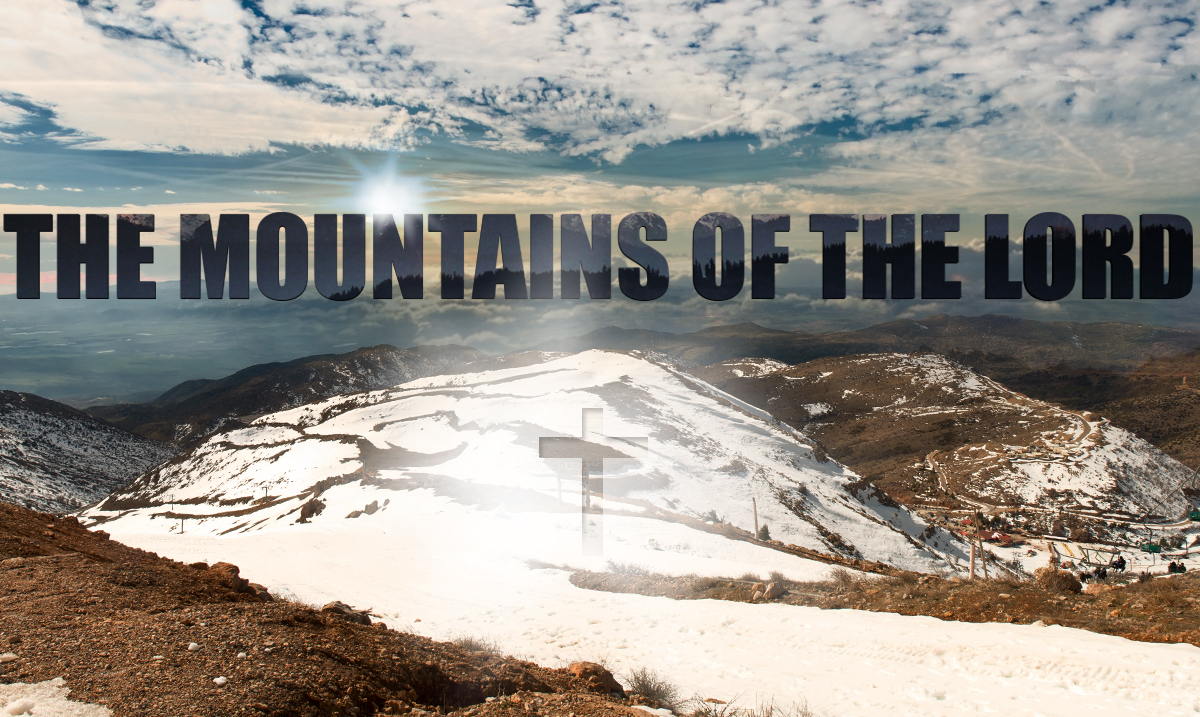            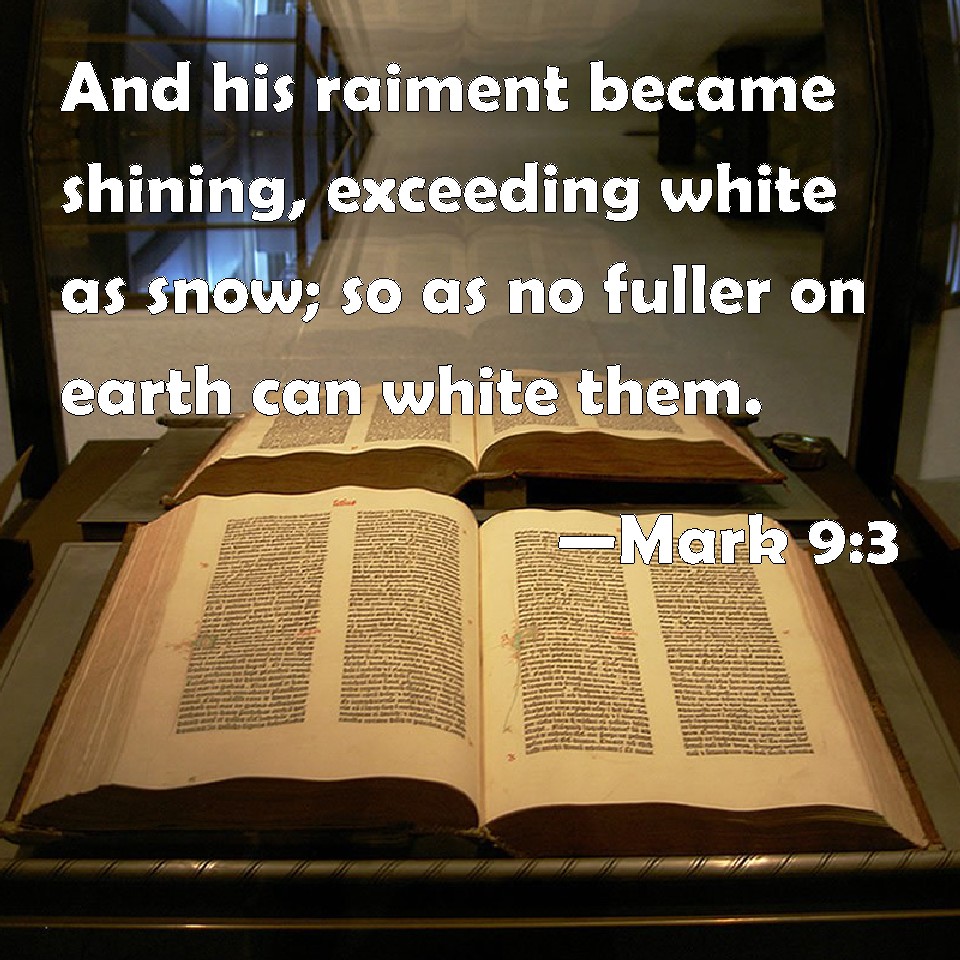 
|
|
|
|
|
John 1:1-2:1 symbolize the first week of creation which ended on the 7th day with the wedding of Adam and Eve. John's week ends with the wedding in Cana.
| Day #1 |
1:23-28 "This was the witness of John, when the Jews sent to him priests and Levites from Jerusalem..." "This happened at Bethany, on the far side of the Jordan, where John was baptizing." |
| Day #2 |
1:29-34 "The next day..." "I have seen and I testify that he is the Son of God." |
| Day #3 |
1:35-42 "The next day..." "You Simon son of John; you are to be called Cephas-which means Rock."
|
| Day #4 |
1:43-51 "The next day..." "...you will see heaven open and the angels of God ascending and descending over the Son of man." |
| Day #5-6 |
|
| Day #7 |
2:1 "On the third day"...[from the last day which was day 4] there was a wedding at Cana in Galilee." |
Michal Hunt, Copyright © 2003 Agape Bible Study. Permissions All Rights Reserved.
Jesus identifies Himself with the significant and symbolic words: I AM, ego ami, which reminds us of Yahweh's revelation of Himself to Moses3 times as I AM in Exodus 3:13-14. In John's Gospel Jesus will use these words 26 times and in 7 different metaphors [each used with a predicate nominative]:
| 1. 6:35 |
"I AM the bread of life" |
| 2. 8:12 |
"I AM the light of the world" |
| 3. 10:7 |
"I AM the gate for the sheep" |
| 4. 10:11 |
"I AM the good shepherd" |
| 5. 11:25 |
"I AM the resurrection and the life" |
| 6. 14:6 |
"I AM the way and the truth and the life" |
| 7. 15:1 |
"I AM the true vine" |
Michal Hunt, Copyright © 2003 Agape Bible Study. Permissions All Rights Reserved.
St. John will also record four "I AM" statements in which Jesus does not use a predicate nominative:
| "I AM" with predicate nominative |
"I AM" without predicate nominative |
| 1. 6:35 |
"I AM the bread of life" |
1. 8:24 |
"...if you do not believe that I AM, you will die in your sins." |
| 2. 8:12 |
"I AM the light of the world" |
2. 8:28 |
When you have lifted up the Son of man, then you will know that I AM (He)* |
| 3. 10:7 |
"I AM the gate for the sheep" |
3. 8:58 |
"In all truth (Amen, amen) I tell you, before Abraham ever was, I AM." |
| 4. 10:11 |
"I AM the good shepherd" |
4. 13:19 |
"I tell you this now, before it happens, so that when it does happen you may believe that I AM (He)*" |
| 5. 11:25 |
"I AM the resurrection and the life" |
|
| 6. 14:6 |
"I AM the way and the truth and the life" |
|
| 7. 15:1 |
"I AM the true vine" |
|
John’s Disciples Follow Jesus (THIRD DAY)
35 The next day John was there again with two of his disciples. 36 When he saw Jesus passing by, he said, “Look, the Lamb of God!”
37 When the two disciples heard him say this, they followed Jesus. 38 Turning around, Jesus saw them following and asked, “What do you want?”
They said, “Rabbi” (which means “Teacher”), “where are you staying?”
39 “Come,” he replied, “and you will see.”
So they went and saw where he was staying, and they spent that day with him. It was about four in the afternoon.
40 Andrew, Simon Peter’s brother, was one of the two who heard what John had said and who had followed Jesus. 41 The first thing Andrew did was to find his brother Simon and tell him, “We have found the Messiah” (that is, the Christ). 42 And he brought him to Jesus.
Jesus looked at him and said, “You are Simon son of John. You will be called Cephas” (which, when translated, is Peter).
Jesus Calls Philip and Nathanael
43 The next day Jesus decided to leave for Galilee. Finding Philip, he said to him, “Follow me.”
44 Philip, like Andrew and Peter, was from the town of Bethsaida. 45 Philip found Nathanael and told him, “We have found the one Moses wrote about in the Law, and about whom the prophets also wrote—Jesus of Nazareth, the son of Joseph.”
46 “Nazareth! Can anything good come from there?” Nathanael asked.
“Come and see,” said Philip.
47 When Jesus saw Nathanael approaching, he said of him, “Here truly is an Israelite in whom there is no deceit.”
48 “How do you know me?” Nathanael asked.
Jesus answered, “I saw you while you were still under the fig tree before Philip called you.”
49 Then Nathanael declared, “Rabbi, you are the Son of God; you are the king of Israel.”
50 Jesus said, “You believe because I told you I saw you under the fig tree. You will see greater things than that.” 51 He then added, “Very truly I tell you, you will see ‘heaven open, and the angels of God ascending and descending on’ the Son of Man.”
The Empty Tomb
20 Early on the first day of the week, while it was still dark, Mary Magdalene went to the tomb and saw that the stone had been removed from the entrance. 2 So she came running to Simon Peter and the other disciple, the one Jesus loved, and said, “They have taken the Lord out of the tomb, and we don’t know where they have put him!”
3 So Peter and the other disciple started for the tomb. 4 Both were running, but the other disciple outran Peter and reached the tomb first. 5 He bent over and looked in at the strips of linen lying there but did not go in. 6 Then Simon Peter came along behind him and went straight into the tomb. He saw the strips of linen lying there, 7 as well as the cloth that had been wrapped around Jesus’ head. The cloth was still lying in its place, separate from the linen. 8 Finally the other disciple, who had reached the tomb first, also went inside. He saw and believed. 9 (They still did not understand from Scripture that Jesus had to rise from the dead.) 10 Then the disciples went back to where they were staying.
Jesus Appears to Mary Magdalene
11 Now Mary stood outside the tomb crying. As she wept, she bent over to look into the tomb 12 and saw two angels in white, seated where Jesus’ body had been, one at the head and the other at the foot.
13 They asked her, “Woman, why are you crying?”
“They have taken my Lord away,” she said, “and I don’t know where they have put him.” 14 At this, she turned around and saw Jesus standing there, but she did not realize that it was Jesus.
15 He asked her, “Woman, why are you crying? Who is it you are looking for?”
Thinking he was the gardener, she said, “Sir, if you have carried him away, tell me where you have put him, and I will get him.”
16 Jesus said to her, “Mary.”
She turned toward him and cried out in Aramaic, “Rabboni!” (which means “Teacher”).
17 Jesus said, “Do not hold on to me, for I have not yet ascended to the Father. Go instead to my brothers and tell them, ‘I am ascending to my Father and your Father, to my God and your God.’”
18 Mary Magdalene went to the disciples with the news: “I have seen the Lord!” And she told them that he had said these things to her.
Jesus Appears to His Disciples
19 On the evening of that first day of the week, when the disciples were together, with the doors locked for fear of the Jewish leaders, Jesus came and stood among them and said, “Peace be with you!” 20 After he said this, he showed them his hands and side. The disciples were overjoyed when they saw the Lord.
|
|
|
 Primer Primer
 Anterior
51 a 65 de 65
Siguiente Anterior
51 a 65 de 65
Siguiente
 Último
Último

|
|
| |
|
|
©2024 - Gabitos - Todos los derechos reservados | |
|
|














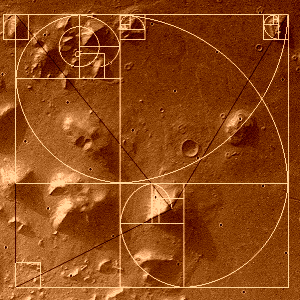







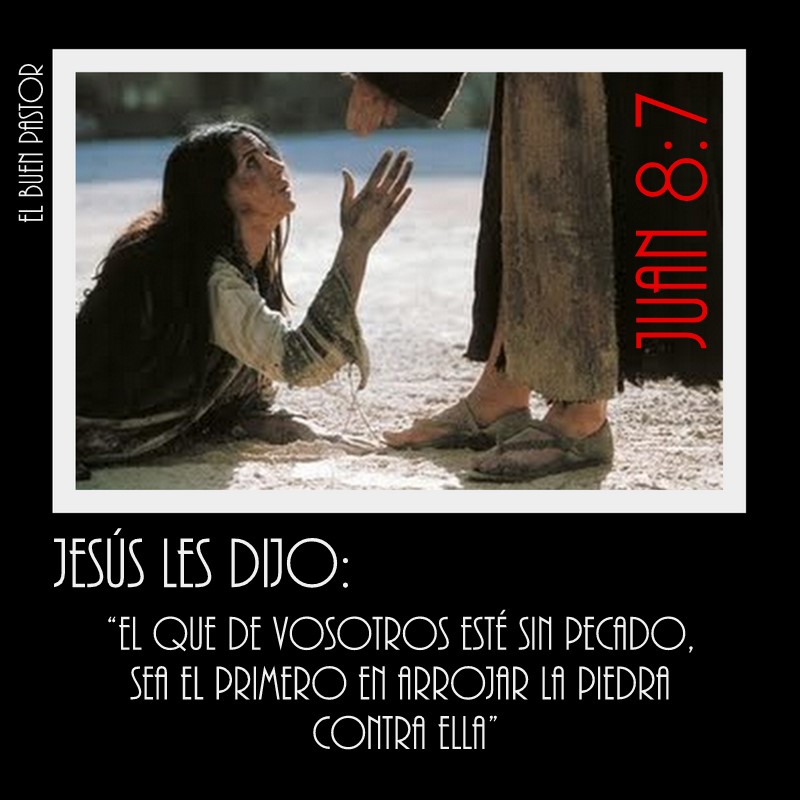







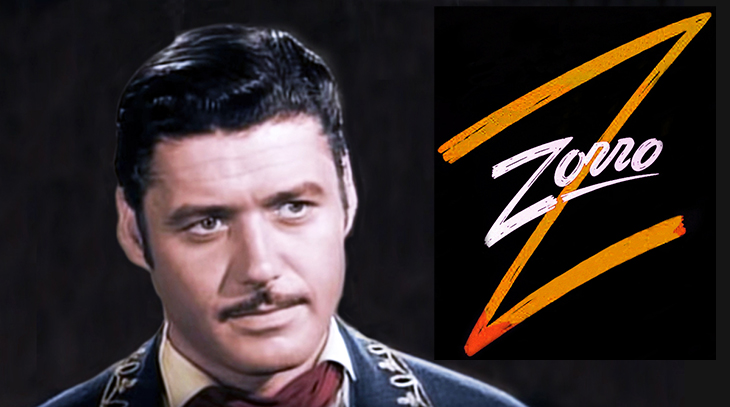





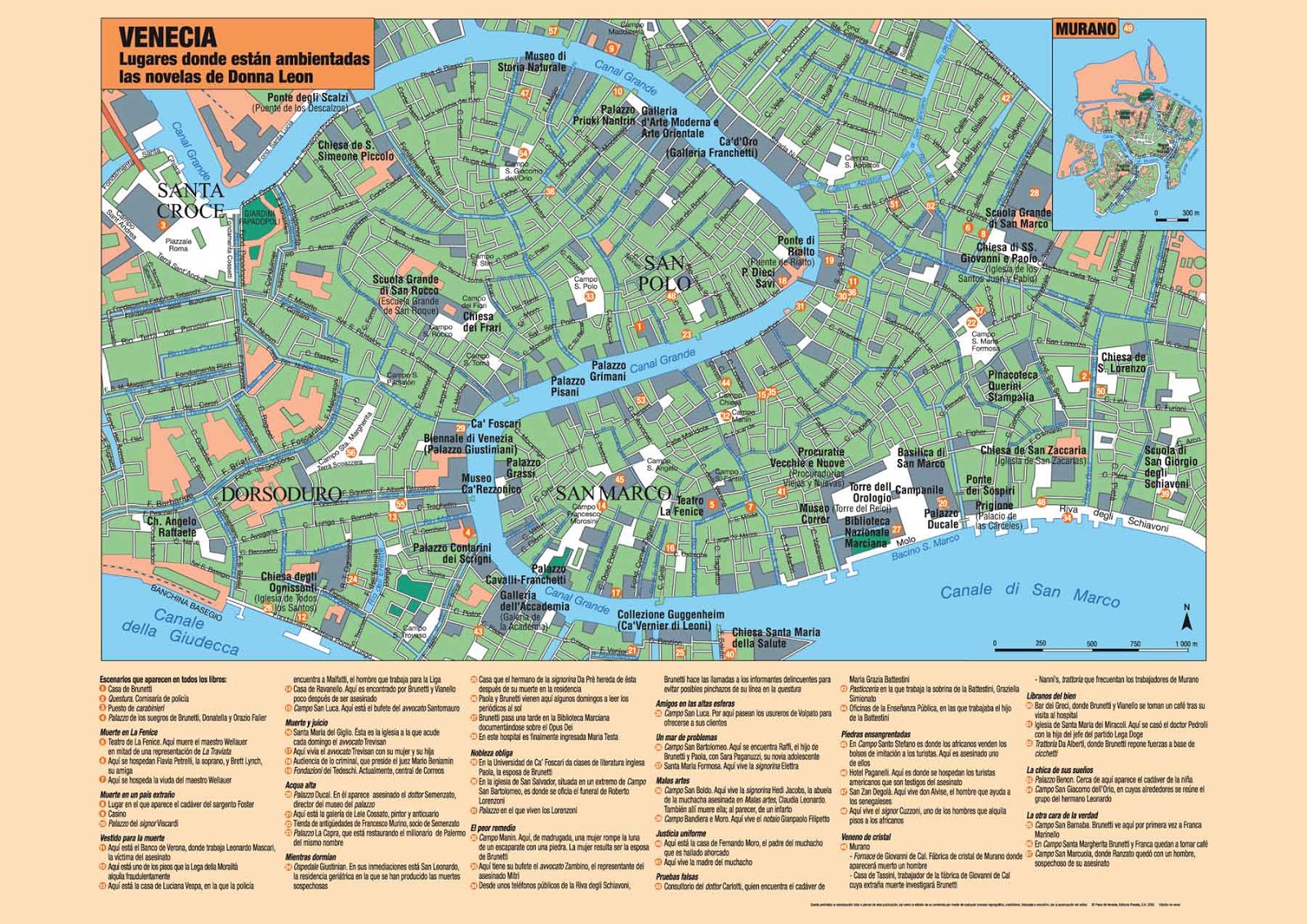


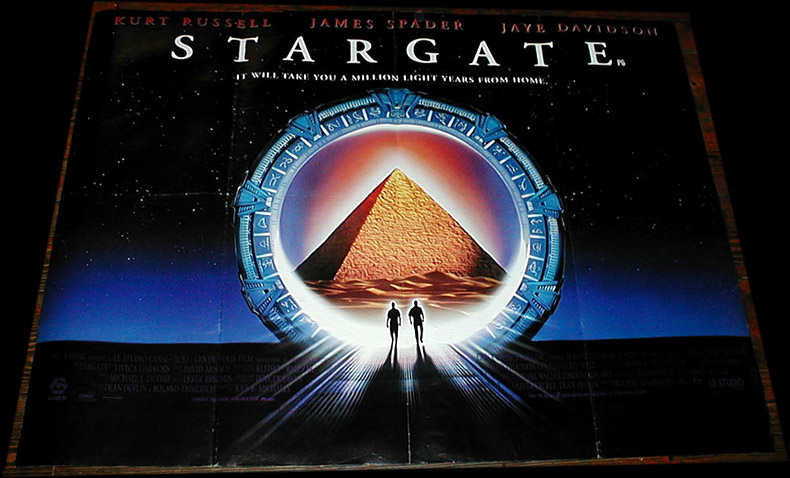































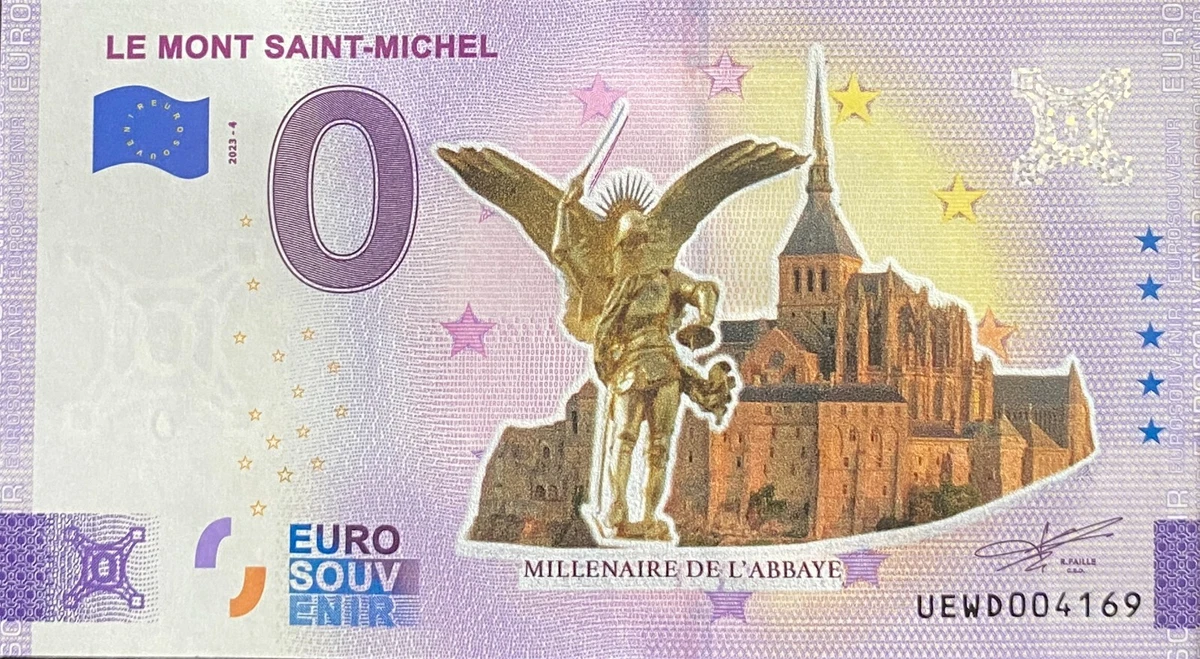




























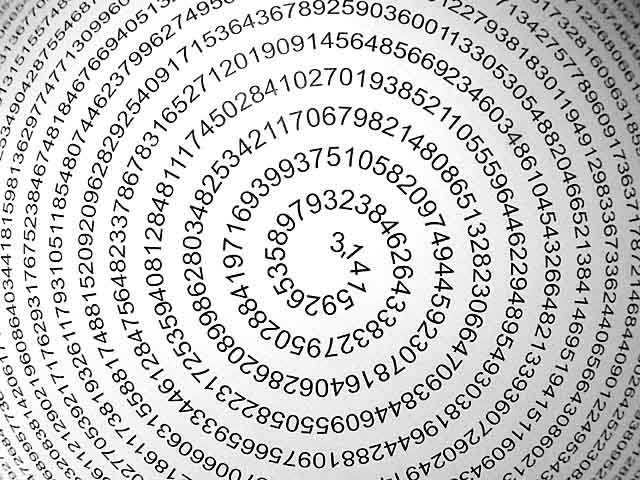





 Traditional clothing of the Knights Templar
Traditional clothing of the Knights Templar Burning of the Knights Templar
Burning of the Knights Templar Image of the Jomsvikings, by Gerhard Munthe, 1899.
Image of the Jomsvikings, by Gerhard Munthe, 1899.


















![Revelation 1:14 (lsv) - and His head and hairs [were] white, as if ...](https://img2.bibliaya.com/Bibleya/verse/revelation-1-14-lsv.jpg)



















